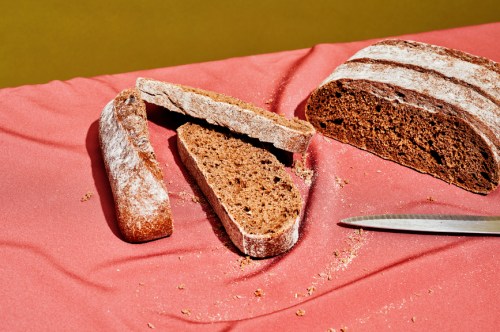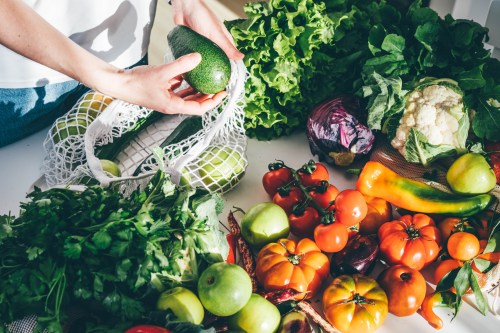Our editors independently select these products. Making a purchase through our links may earn Well+Good a commission
Why Eating Rye Bread Can Help Balance and Diversify Your Gut Microbiome, According to a Doctor and Dietitian
Is rye bread good for you? Learn all about nutritional benefits and drawbacks with input from a doctor and registered dietitians.

When it comes to the world of bread, there’s tons of options to choose from. That said, some types of healthy breads (ahem, sprouted, whole grain, and longevity-boosting sourdough, to name a few) tend to steal the spotlight. But, if there’s one oldie-but-goodie bread out there that definitely deserves a little more TLC, it’s definitely rye bread.
Experts in This Article
a certified dietitian, nutritionist, and founder of Real Nutrition NYC
Brooklyn-based registered dietitian
heart surgeon and author of The Plant Paradox
A traditionally Scandinavian staple—it’s a go-to in many regional Nordic cuisines—rye bread is slowly but surely making a comeback, and we’re here for it. (Apparently Pippa Middleton swears by rye bread for her morning slice of toast? The more you know?)
To get to the bottom of it, we asked three health pros all our pressing rye-related questions to see if it’s really the best thing since sliced bread… literally.
So first, what is rye?
Consider rye a close cousin of wheat and barley. “Rye is a grain of a common weed that initially grew hidden in fields of wheat,” says Steven Gundry, MD, author of The Longevity Paradox: How to Die Young at a Ripe Old Age.“It evolved to mimic wheat to avoid detection and be resown with similar looking wheat seeds by early farmers.” However, thanks to its high tolerance for growing in cold climates (unlike some types of wheat), it wasn’t long before rye became a cereal crop in its own right.
So, what makes rye so different from other types of grains? Well, it’s highly different in terms of taste, texture, and appearance. “Rye is heavier and darker than most other flours, so it produces a heavier, dense, dark bread with hints of mushroom and earthy green flavors,” says Shira Sussi MS, RD, CDN, founder of Shira Sussi Nutrition.
That’s to say, if you’re into pumpernickel, you’ll more than likely enjoy rye, too. “Some 100-percent rye breads take on a thick, sticky, consistency, which is because it has less gluten than all-purpose or whole wheat flour and absorbs eight times its weight in water,” Sussi says.
Rye bread health benefits, according to health experts
Rye bread isn’t just delicious, it also is packed with a bevy of benefits. “Rye is a great source of vitamins and minerals, including magnesium, potassium and phosphorus, and antioxidants,” Sussi says. (Although, this is pretty on-par with the benefits of other whole wheat vs. whole grain breads.)
However, one of the main selling points of rye bread is that it’s naturally high in fiber. (One slice of rye bread itself has about two grams of fiber, which is not too shabby for a bread.) “Its high-fiber content makes it a heart-healthy grain good for lowering blood pressure and cholesterol,” Sussi says. “Its slow transit time [in your digestive system] and ability to be only partially digested is beneficial for gut health.” Not to mention, consuming sufficient amounts of fiber is a key factor for healthy aging.
Additionally, the fiber content will also keep you fuller for longer, which can be beneficial for promoting satiety. This is again similar to the benefits of other high-fiber foods like oats, chia seeds, and black beans.
Who should not eat rye bread?
If you’re looking for the healthiest gluten-free bread alternative, rye bread is, unfortunately, not the answer, Dr. Gundry says. So, does rye bread have gluten? Yep. Like wheat, rye contains gluten (albeit smaller amounts, says Sussi), which can wreak havoc on your digestive system if you suffer from things like Celiac disease. As such, it’s important to keep in mind that rye causes inflammation for folks with gluten intolerances or allergies. (Of course, this won’t be the case for everyone.)
On that note, it’s important to point out that unlike wheat bread, Dr. Gundry says, rye doesn’t have wheat germ agglutinin (WGA), which is a small lectin that is responsible for wheat’s inflammatory and anti-insulin properties. So, if you don’t have Celiac or a non-Celiac gluten intolerance, but have simply decided to cut back on your gluten intake, rye bread could be a good alternative to try.
What should I look for when buying rye bread?
When it comes to shopping for rye bread, experts say you’ll want to be a little pickier than usual, and do your homework to ensure you’re getting the real deal good stuff. In other words, just because rye’s dark color makes it look like a whole grain loaf, doesn’t mean that it’s always whole grain, let alone made with 100 percent rye.
As such, you’ll want to take special note of what’s on the ingredient list to ensure rye is really what you’re getting, and not a bevy of added ingredients you may not want. “To ensure you’re getting whole grain rye, look for whole rye or rye berries on the label,” Sussi says. “Many rye breads today are blends of light, medium, or dark rye flour blended with a higher protein flour, like wheat, for better rising,” she says.
For even more healthy bread recipes, both Dr. Gundry and Sussi also recommend opting for rye sourdough whenever possible over regular rye. That’s because the fermentation process helps break down the gluten in rye, giving way to potentially more antioxidant properties. (Plus, gastroenterologists love fermented bread for a healthier gut microbiome.)
Finally, this almost goes without saying, but always make sure to inspect the loaf before tossing it into your shopping cart to avoid the ultimate yuck: eating moldy bread by accident. (Although if you happen to take it a bite, chances are you’ll be just fine.)
TL;DR? If you’re on the market for some delicious bread, rye bread is pretty darn good for you. However, you’ll want to buy whole rye wherever possible to ensure you’re getting the most nutritional benefits.
Would you recommend eating rye bread everyday?
Although food diversity is key when it comes to maintaining a well-balanced and robust microbiome, routines aren’t always a bad thing. According to Amy Shapiro, MS, RD, CDN, a registered dietitian and the founder and director of Real Nutrition, a daily slice of rye can offer some perks. “Rye bread tends to be high in fiber and it provides a good amount of micronutrients including selenium and b-vitamins, when compared to white or wheat breads,” Shapiro says.
Like Dr. Gundry and Sussi, Shapiro notes that the quality (and availability of nutrients) all depends on how it’s made. “It does depend on the color of the rye bread. Light wheat bread is often made with both light rye flour and wheat flour but the darker it gets it usually is made of rye alone,” she says. Again, the key is to know what you’re getting.
But consuming rye all day every day shouldn’t be your go-to, either. “Although it is good for you, it does contain phytic acid, which is an anti-nutrient that can prevent the absorption of other nutrients,” Shapiro says. Additionally, some rye breads can contain high quantities of inflammation-causing added sugars (again, depending on how it’s produced). Plus, the gluten and high fiber content can exacerbate sensitivities for some folks.
In short: Shapiro say, while it’s a healthy addition to your diet, she emphasizes that it shouldn’t completely replace all other bread options or other essential food groups. Like most things in life, balance is key, fam.
A dietitian shares a comprehensive guide to achieving optimal gut health:
Sign Up for Our Daily Newsletter
Get all the latest in wellness, trends, food, fitness, beauty, and more delivered right to your inbox.
Got it, you've been added to our email list.









